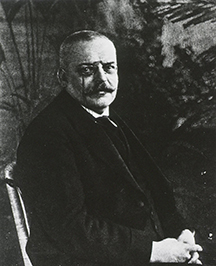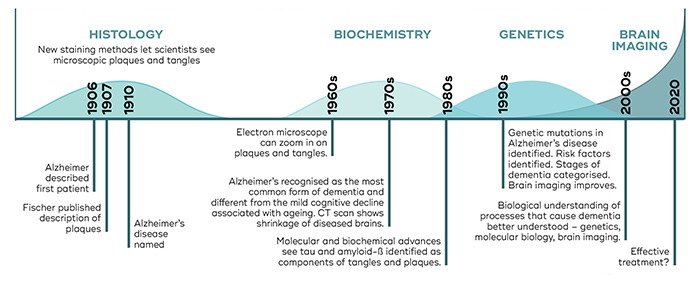History of dementia research

The concept of dementia has been around since early civilisations. Ancient philosophers viewed mental decay as a normal part of ageing. The prevalence and study of dementia increased as the lifespan of humans extended. In the late 1800s, with advancements in medicine and the ability to look inside the brain, the medical community realised that diseases could cause this deterioration. The most common dementia was named, in 1910, after Alois Alzheimer, a German psychiatrist.
In 1906, Alzheimer, who looked at post-mortem brains of affected younger people, published the first case - a 50-year-old woman with dementia symptoms. After her death, Alzheimer saw the microscopic plaques and tangles now known as hallmarks of the disease. At the same time another German psychiatrist, Oskar Fischer, studied the brains of older people, and he, too, saw plaques and tangles. Both contributions furthered the understanding of the condition, but the naming of Alzheimer’s disease by prominent psychiatrist Emil Kraepelin and the occurence of World War II relegated Fischer’s name into obscurity.
As medical technology improved, so has the understanding of dementia and its causes.
Timeline of dementia research focus


